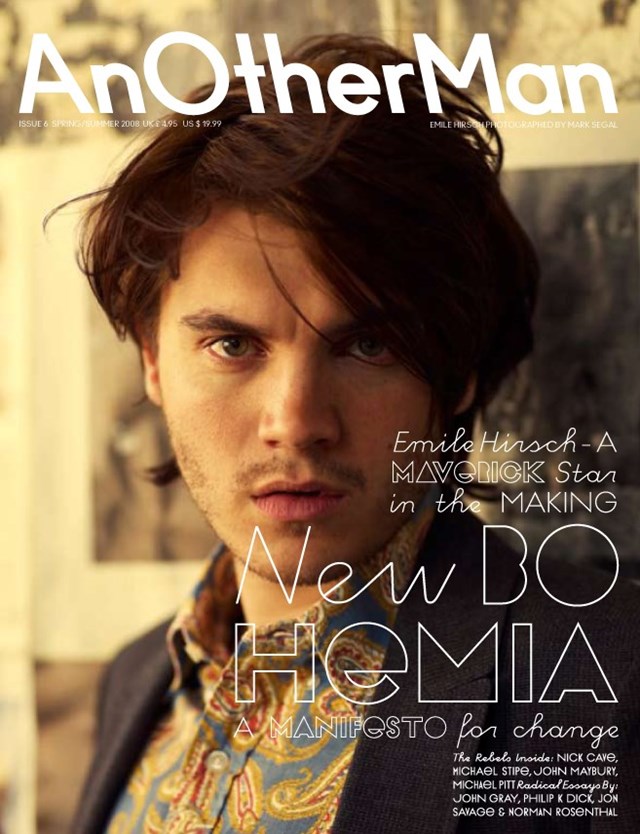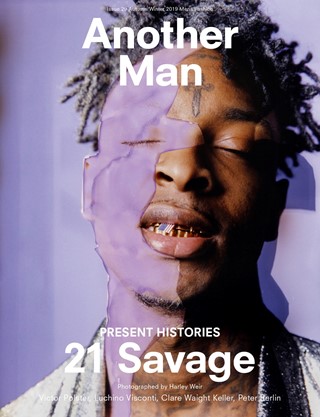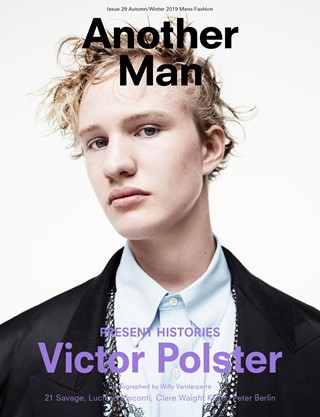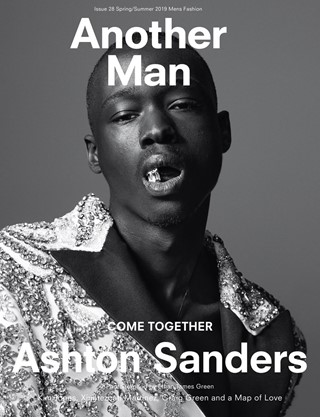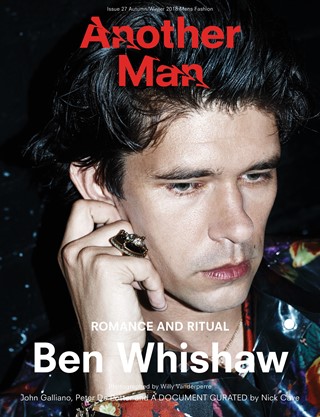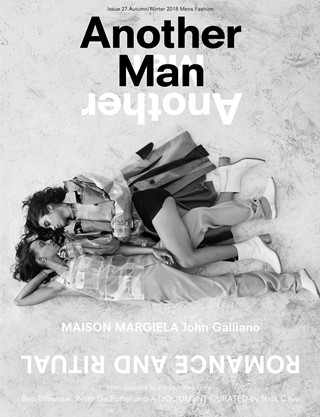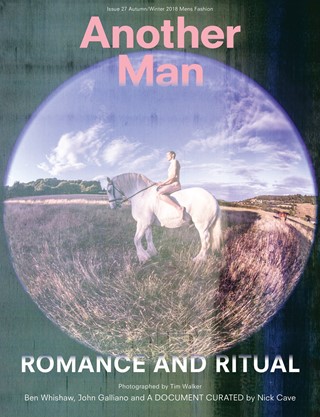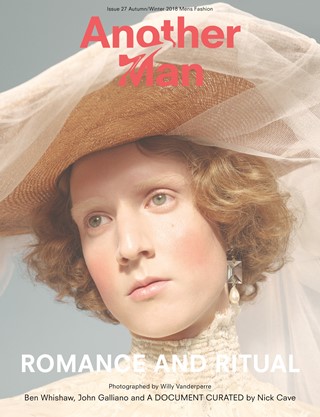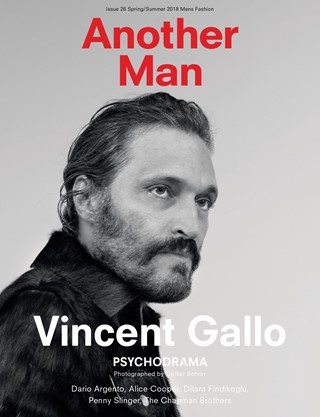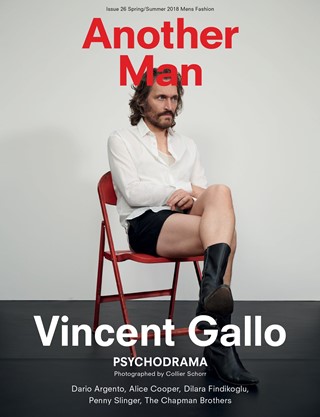Emile Hirsch
It must take a lot to impress Sean Penn. This is the actor and director who never minces his words or chooses a movie lightly. This is the bold activist who stands up to corrupt governments and uses his fame to point the finger squarely at social and political injustices. And so when Penn saw the young actor Emile Hirsch in Catherine Hardwicke’s Lords of Dogtown, her fast-moving, heavy-smoking take on the 1970s LA skate scene, something rare must have sparked up inside him. Penn was so intrigued by Hirsch’s turn as Jay Adams in that film– all long hair and scowls – that he picked up the phone and quickly got hold of Hirsch’s number. He had a film in the pipeline: for a while he had been chewing over a plan to adapt and direct Jon Krakauer’s book about Christopher McCandless, the American university graduate who in 1992 turned his back on his comfortable, everyday suburban world and set off into the landscape, eventually camping out in a rotting school bus in the freezing wastes of Alaska, where he was found dead two years later. But at this stage Penn hadn’t written a script. Nor did he have an actor in mind to play McCandless, this troubled, complex young man who was fired up by the writers Jack London, Henry David Thoreau and Walt Whitman to disappear from his family on the east coast, call himself by the strange nickname of Alexander Supertramp and never again return home.
This 22-year-old has all the perkiness of a young actor on the rise coupled with all the laidback attitude that comes with growing up in Venice Beach, California, and easing yourself ever so smoothly into the acting game over your teenage years. It’s in Venice that Hirsch still lives – which is increasingly handy for the day job: he’s just finished a 50-day shoot on Speed Racer, a massive studio film, all digital effects and gruelling green-screen work, for the Wachowski brothers, the directors of the Matrix series. Soon, too, he’ll be heading north to San Francisco to work with Gus Van Sant on Milk, the story of Harvey Milk, the gay San Francisco politician who in the late 1970s was assassinated alongside the city’s mayor.
Now, though, Hirsch is still contending with the continuing rush of attention for Into the Wild, Penn’s celebrated film about McCandless. Not only do critics and audiences love the film, but even Hirsch’s fellow actors rated his performance so highly as to shower him with a Best Actor nomination for the prestigious Screen Actors Guild awards. And all this for a kid who not that long ago was in high school in Los Angeles, skating the streets of Venice in his spare time, and notching up the odd acting gig on the side.
“Sean called me up after seeing Lords of Dogtown and we started getting together,” Hirsch recalls, running with the story of how Penn came to cast him in Into the Wild. Not that Penn handed him the part on a plate. He made him sweat a little, made him work for his money. “He didn’t immediately tell me that he had a part or anything, he just told me to read the book. I read it and loved it, and it was a period of about four months before he told me he was going to give me the part. I think it was really a process of him just wanting to get to know me. In his mind he wanted to know that I had the right stuff.”
At first, the pair had a coffee together in Los Angeles and Penn gave him a copy of Krakauer’s book, which Hirsch read straightaway that same night. He called Penn the next day, told him he loved it. “He was happy to hear that.” But Hirsch didn’t hear from Penn again for a couple of months. Then he called. They had dinner, some drinks, their conversations continued, and Hirsch started meeting some of Penn’s friends, Bono, Terrence Howard, Alejandro Gonzáález Iññáárritu. It span his head a little. It was all so casual. “We’d go on these dinners and get drinks occasionally. It was all about just thoroughly getting to know each other. To shoot the movie was going to be eight months every day, you know? Being around each other practically 24/7. We had to know that we got along with each other. That I wasn’t a royal pain in the ass.”
He doesn’t sound like a pain in the ass. He’s too relaxed, too genuinely excited by being spun around in strange contraptions for days on end and hanging out with a chimpanzee on the set of the Wachowskis’ film to sound even a tiny bit arrogant or self-satisfied. You get the sense, though, that Penn wasn’t just concerned with whether Hirsch could hack a long shoot or whether this kid was going to begin to annoy him after a few days. Penn knew that Hirsch could act – he’d seen him in Hardwicke’s movie and surely also seen him steal the show as a nasty-piece-of-work drug dealer in Nick Cassavetes’s down-and-dirty Alpha Dog.
No – what Penn must have cared about more than all of this was whether Hirsch fully understood Krakauer’s book – and, most importantly of all, whether he completely understood what it was about McCandless’s extraordinary story that had moved Penn so much in the first place. It’s obvious from the finished film that McCandless’s experiences stirred something deep within Penn. It’s clear from the worship of the changing landscapes from South Dakota to Los Angeles to Alaska – shot so brilliantly by Eric Gautier of The Motorcycle Diaries – and the close examination of McCandless’s travels and meetings with folk from middle-aged hippies to fellow youngsters to an elderly man, played by Hal Holbrook, that Penn is telling a story incredibly close to his own heart. He surely wanted that story to stir something deep within Hirsch too, not least so that he could capture that affinity right up there on the big screen. This was a passion project – and Hirsch had to be along for the ride.
“Chris McCandless provoked very necessary things in me,” Penn explains during a trip to London. For him, McCandless is a window on ways of living, ways of thinking. “We’ve let the blade of our innocence dull over time and it’s only in innocence that you can find any kind of magic, any kind of courage. And I’ve been a road-rat since I got my driver’s licence at 16, so I’ve probably gone across America 20 times. The landscape always kind of spoke to me.”
Hirsch was the right age to realise Penn’s vision of the idealistic wanderer McCandless: at 21, he inhabited that place where childhood meets adulthood, where you can comfortably talk big ideas without having to justify them. It was only a few years before he was cast in Into the Wild that Hirsch was at high school in Los Angeles and doing the odd brief stint on television shows during the school holidays. From the age of 11, he would pop up briefly in series like 3rd Rock From the Sun, NYPD Blue or Sabrina, the Teenage Witch. Back then he was never a full-time actor; it was something he did on the side in the school holidays. He was a handsome kid, perfect to light up long-running series in guest slots. “It all came about through my sister, who was really interested in musical theatre and plays,” remembers Hirsch.
“We ended up going to drama camp together as kids, and I kind of tagged along with her. Our parents saw how much fun we were having and we started going to auditions and doing the odd thing on TV here and there while at school. It was a gradual thing. Even from a really young age I really loved the idea of being an actor and once I started doing it, I just went: Oh, well okay, I’ll be an actor. It was simple. It was like: that’s what I do. Okay, I’ll be an actor.”
Simple as that. Hirsch doesn’t buy into grand theories about acting. Nor does he ever remember having much of a game plan, even as he graduated from television into making films when he was around 15. First there was a TV movie, Iris, with Laura Linney and Gena Rowlands, and then his first big break came with The Dangerous Lives of Altar Boys in 2002 in which he played Francis, a kid at a conservative Catholic school who indulges in great leaps of imagination via the doodles in his beloved comic book.
“There was no strategy or anything like that,” Hirsch recalls, remembering how his manager at the time would pass him scripts that he thought the teenager might like. “I’d read something and then say I really like it and think it’s interesting and it would progress from there. I’ve naturally levitated towards dramas, I guess. I’ve made a couple of exceptions with The Girl Next Door, which is a little bit more of a comedy, and Speed Racer, which is dramatic, but there’s also more of a comedic and action spin to that too.”
Hirsch doesn’t remember struggling too hard as a beginner in the industry or ever finding it difficult to balance school and acting. His memories of school – he went to Hamilton High School in LA – are typically relaxed. “The school I went to was definitely considered pretty cool,” he says. “It’s known for being a really socially constructive school. We had a lot of teachers with great ideas and integrity.”
There were a couple of other smaller movies at that time, like The Emperor’s Club and The Mudge Boy, which gave Hirsch valuable experience as a young lead and put him alongside actors like Kevin Kline and Sigourney Weaver but didn’t make too much of a splash at the box office or with audiences. This was Hirsch’s training though: on the job, in front of the cameras. “You’re lucky if you get a chance to train by actually working because for the most part you’re not training with other novices. When I was 15 and working on a movie, I was with Gena Rowlands and Laura Linney, and they’re both consummate, wonderful actresses. I wasn’t around beginners, I didn’t get to see what the beginners were doing, I was around these masters and I just thought that was normal.”
But the film that Hirsch really leapt at with all guns blazing and which put him into a new league as an edgy young star was Lords of Dogtown. For a kid who loved skating and lived in Venice it was a dream come true: to play Jay Adams, the most legendary, most mysterious, most gifted of that early LA skate crew that included Tony Alva and Stacy Peralta. The film grew out of Peralta’s own, terrific documentary on the scene, Dogtown and Z-Boys (which, coincidentally, was narrated by Sean Penn): a film which Hirsch had seen and loved. “I grew up skateboarding and to make that film meant I got to be by the beach, skateboarding and surfing,” he says, sharing a fond memory. “I remember when that documentary came out. My father knew I was a skateboarder and he saw it at a local independent cinema. He said to me, ‘You’ve got to go and see this movie, you’ve got to go see it.’ So he took me to see it and I just remember being riveted by it. I remember I walked out of the theatre and said, ‘I would love to play Jay Adams in a movie.’ I didn’t even know they were making a movie. It was years before. Three or four years at least. I was probably 15 and I didn’t make that movie until I was 19.”
Hirsch got to meet Jay Adams when he was researching Lords of Dogtown. “I went to Hawaii and we got together. I still talk to him every now and then. He’s an incredible guy.” And that role was the first of three, almost consecutive parts that Hirsch would play that were real people. After Adams, there was Johnny Truelove in Alpha Dog, the dealer who was implicated in the murder of a 15-year-old as a result of a drugs dispute, and then, of course, came Christopher McCandless. McCandless had died in 1992, but Hirsch met his parents and his sister, Carine (played by Jena Malone in the film) when he was preparing to shoot Into the Wild. To play characters who are alive, or whose families are close to a project, must cause a special burden on a young actor?
“Yeah, it’s a mixed responsibility,” Hirsch considers. “But the responsibility is what you feel entitled to give it – what you feel is necessary. I feel very strongly about Jay Adams and I think for young actors it can be a real awakening playing a character that’s based on someone who’s real. It requires a different kind of research and preparation that as a younger actor you might not be used to. You might be used to playing yourself in a weird way. But you see this other person and realise you’re actually playing this person. I enjoy the whole process of discovering people’s stories.”
When it came to making Into the Wild, Hirsch came into his own, more than proving that Penn’s first instincts couldn’t have been more right. Penn didn’t need to tell Hirsch that intense preparation was needed for such a gruelling physical role – eight months travelling across America, hiking in the sun, freezing in the cold of Alaska, losing an incredible amount of weight as the shoot went on... “I decided that I was going to be in the best shape of my life and I was going to completely commit to the role, which is what was required. Which included running, getting myself fit, weight-lifting, all those activities which strengthen the body.”
“There were certain physical stunts it was hard to get my head around, like doing the rapids on the Colorado River, I was a little bit nervous about that. Sean assuaged my fear by going first. He went over the rapids first, he did it himself. And working with a grizzly bear was a bit nerve-wracking. You never know what a bear is going to do.”
Listening to Hirsch’s voice, you can tell that making Into the Wild put everything else he’d ever done in the shade. This was the real deal: Sean Penn, America, travelling, and the story of a bizarre real life that hit on a big question: how should we live our lives?
“We hit the road for a journey of a lifetime,” says Hirsch breathlessly. “We went to 36 locations across north America, we were in snow, we were in desert, we were in the mountains, we were in water. It was a very emotionally and physically varied landscape, and we worked with so many different actors, wonderful actors, like Hal Holbrook, William Hurt, Catherine Keener, the beautiful Kristen Stewart. We had this huge experience in terms of filmmaking, but it was also intimate, you know? An intimate epic, in a weird way.”
It’s all made a big mark on Hirsch. He followed Penn’s film by making a massive film laden with digital effects – the sort of film that, on paper, seems a million miles away from the on-the-road approach of Into the Wild: Speed Racer is an adaptation of a 60s Japanese cartoon series and Hirsch plays a racing driver whose biggest thrill is to hit high speeds. It’s a movie-cum-cartoon-cum-experiment-cum-high energy experience. But what it isn’t, according to Hirsch, is turning his back on everything he gained from making Into the Wild. Quite the opposite, in fact. For him, Sean Penn has set him off on a whole new journey, and one he’s not about to leave behind any time soon.
“To me, the appeal of Speed Racer, aside from working with the wonderful Wachowski brothers, who are absolute geniuses, was the idea of continuing Into the Wild, in the sense of living to the fullest in extreme environments. And I have to say the idea of doing a movie completely on a green screen is so alien and seems so strangely horrid that it became a challenge in my mind. I couldn’t go and make some ordinary movie after Into the Wild. I just couldn’t do it. The film has made me a challenge junkie in a weird way. I read some other scripts where they take place in the real world and I’m like, ‘No! I want the green screen! I want the craziness!’ And, believe me, that’s what I got...”
And he’s not leaving Sean Penn behind him. Guess who’s playing the controversial gay politician in Gus Van Sant’s Milk? None other than his old pal and drinking partner. “I can’t wait to be in front of the camera with Sean,” he says excitedly. And you’ve got to believe it.
